Search
Search Results
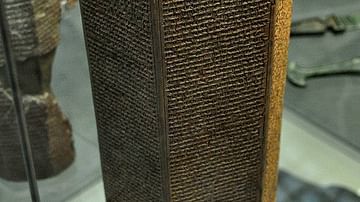
Image
The Taylor Prism of King Sennacherib, Nineveh
This prism records the first eight campaigns of the Assyrian King Sennacherib (704-681 BCE). This six-sided baked clay document (or prism) was discovered at the Assyrian capital Nineveh, in an area known today as Nebi Yunus. It was acquired...
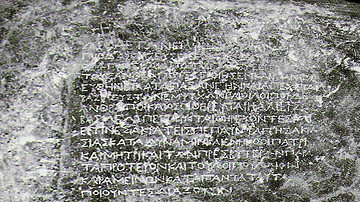
Image
Greek and Aramaic inscriptions by king Ashoka
Bilingual (Greek and Aramaic) inscriptions by king Ashoka at Kandahar (Shar-i-kuna). (3rd century BCE). Preserved at Kabul Museum. Today disappeared. Two-dimensional inscription. Greek (transliteration) 1. δέκα ἐτῶν πληρηεὺς...

Image
Fragment from pyramid of king Pepi I
This limestone block fragment came from the debris of the north wall of the antechamber within the pyramid of king Pepi (Pepy) I at Saqqara. The fragment contains 5 vertical columns of green-filled hieroglyphic inscriptions. The cartouche...

Image
King Tang of Shang
King Tang of Shang Dynasty as imagined by Song Dynasty painter Ma Lin.
Hanging scroll, color on silk. Size 249.2 x 111.4 cm (height x width). Painting is located in the National Palace Museum, Taipei.
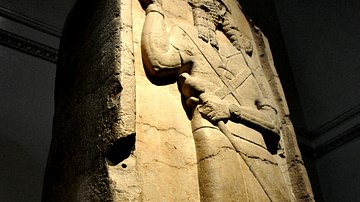
Image
Stela of King Shamshi-Adad V
Stela of the Assyrian king Shamshi-Adad V (r. 824-811 BCE), from Nimrud (ancient Kalhu), modern-day northern Iraq, Neo-Assyrian Empire, 824-811 BCE. It depicts the king, before the symbols of his principal gods. He extends his right hand...
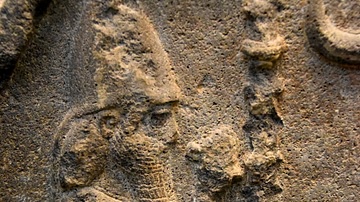
Image
The Babylonian King Nabonidus
This is a detail of a Babylonian basalt stele. Here the figure of the king, Nabonidus was carved in relief on the obverse side of the stele. The king stands and wears a conical headdress as well as a long fringed garment. The right hand is...
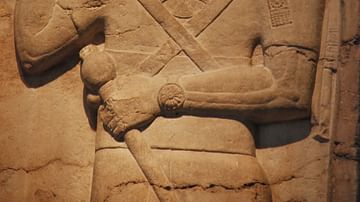
Image
King Shamshi-Adad V
Assyrian stela of Shamshi-Adad V (823-811 BCE) from the temple of Nabu in Nimrud, c. 814 BCE, showing the kind worshipping symbols of the gods. The cross on the king's chest is a symbol of the sun god. Through his dress the Shamshi-Adad V...
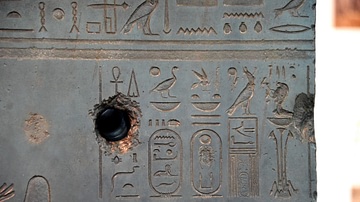
Image
Detail of the Screen Slab of King Nectanebo I
This detail shows the cobra goddess Wadjyt empowering king Nectanebo I, who is represented by his Horus name and cartouches. A pharaoh had five official names; this panel, shows the most important three. The Horus name identifies the king...
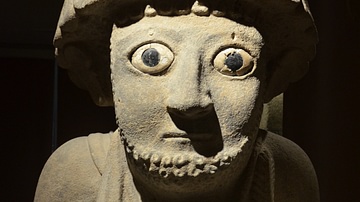
Image
Neo-Hittite King Suppiluliuma
Neo-Hittite statue of King Suppiluliuma unearthed in 2012 at Kunulua, the capital of the Neo-Hittite Kingdom of Patina (1000-738 BCE) in southeastern Turkey. The remains of the figure stand approximately 1.5 meters in height, suggesting a...
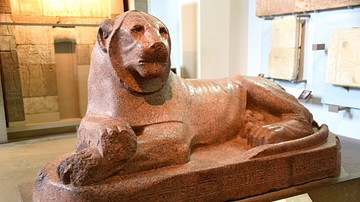
Image
King Amenhotep III as a Lion
Statue of Amenhotep III, declares the king's might by representing him as a lion, from Napata (Gebel Barkal, Sudan), originally from Soleb (Sudan), 18th Dynasty, reign of Amenhotep III, 1390-1352 BCE. Pharaohs were often shown as a sphinx...